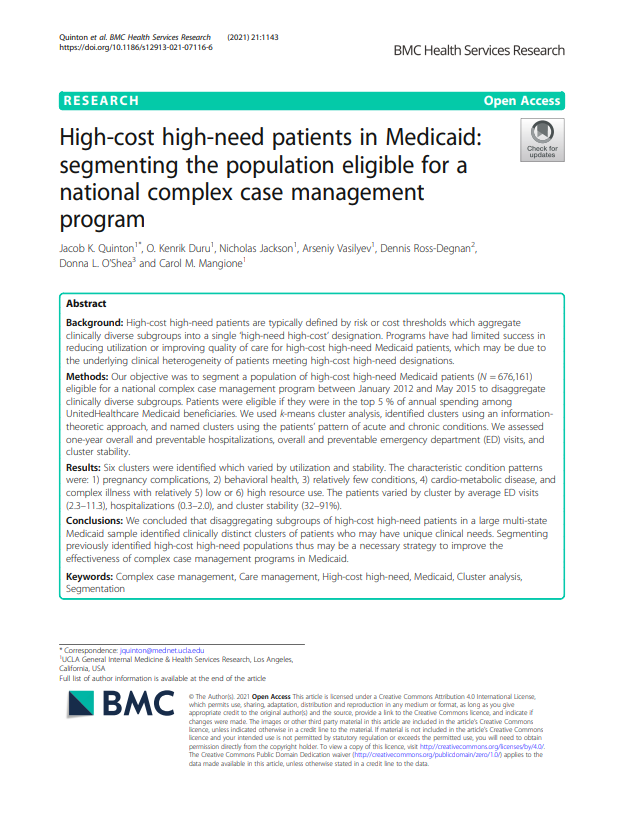Headline
Using segmentation to address clinical and social needs for Medicaid patients with complex needs and costly utilization can improve the effectiveness of complex care programs.
Context
Payer and providers often stratify patients with high utilization and health care needs into a single “high-cost, high-need” subgroup using standard risk or cost thresholds. This practice makes it challenging to identify the unique needs of clinically diverse subgroups, and undermines the effectiveness of complex case management programs in reducing utilization and improving quality of care. In this study, the researchers disaggregated a multi-state sample of Medicaid patients with complex needs and high costs who were eligible for a national complex case management program (N = 676,161) to identify specific subgroups.
Findings
The researchers detected unique patterns of social and clinical needs within different clusters of patients in the sample. The patients were separated into six distinct clusters (pregnancy complications, behavioral health, relatively few conditions, cardio-metabolic disease, and complex illness with low or high resource use), which varied by demographics, preventable hospitalizations, and utilization.
Takeaways
Population segmentation can be an effective strategy, especially for Medicaid agencies and Medicaid managed care organizations, to identify distinct clinically diverse groups and appropriately match them to complex case management programs and population health strategies.




